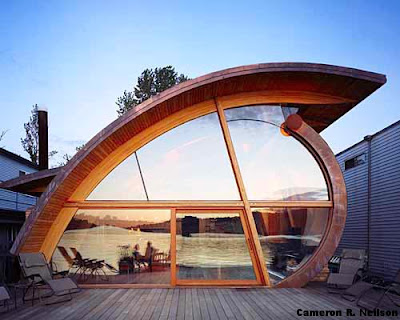Innovating the Future: Sustainable Solutions in Green Architecture
In a world where environmental concerns take center stage, the realm of architecture has embraced innovation to create sustainable design solutions that leave a positive impact on both the planet and its inhabitants. Architects today are not just building structures; they're crafting a greener future. Let's delve into the realm of green architecture and explore how sustainable design is reshaping the landscape.
One remarkable example of sustainable architecture is the One Central Park in Sydney, Australia. Designed by French architect Jean Nouvel and featuring vertical gardens, the building exemplifies the integration of nature into urban spaces. Completed in 2013, this residential and commercial tower stands as a living testament to the harmonious coexistence of concrete and foliage.
Another awe-inspiring creation is the Bosco Verticale, or Vertical Forest, in Milan, Italy. Designed by Stefano Boeri Architects, this pair of residential towers hosts over 2,000 plants, turning them into living, breathing ecosystems. Since its completion in 2014, it has not only enriched the cityscape but also improved air quality and biodiversity.
But it's not just about iconic structures; sustainable architecture has spread its roots into community planning too. The award-winning neighborhood of Vauban in Freiburg, Germany, is a prime example. Built on former military grounds, Vauban boasts car-free streets, solar panels, and energy-efficient homes. This transformative project has become a blueprint for future eco-friendly communities.
Architects today are embracing technology and innovation to craft greener tomorrows. The Bullitt Center in Seattle, USA, proudly holds the title of the "greenest commercial building in the world." Completed in 2013, this net-zero energy structure showcases the potential of solar power, rainwater harvesting, and composting toilets. It's a model for pushing the boundaries of sustainable design.
References to the past are crucial in understanding the evolution of green architecture. The roots of sustainable design can be traced back to the 20th century with Frank Lloyd Wright's visionary concepts of organic architecture. The innovative ideas of pioneers like Wright paved the way for the sustainable practices we see today.
References:
One Central Park, Sydney - Designed by Jean Nouvel, Completed in 2013.
Bosco Verticale, Milan - Designed by Stefano Boeri Architects, Completed in 2014.
Vauban, Freiburg - Sustainable Neighborhood, Innovative Community Planning.
Bullitt Center, Seattle - Net-Zero Energy Commercial Building, Completed in 2013.
Frank Lloyd Wright - Pioneer of Organic Architecture, 20th Century Innovator





Comments